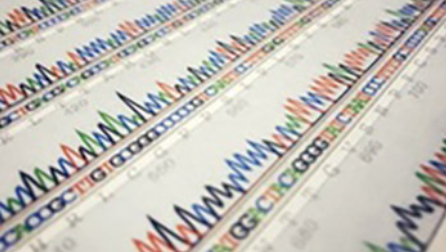Friedreich Ataxia (Fa) Associated with Diabetes Mellitus Type 1 and Hyperthrophic Cardiomyopathy
DOI:
https://doi.org/10.17305/bjbms.2009.2828Keywords:
Friedreich ataxia, diabetes mellitus type 1, hyperthrophic cardiomyopathy, siblingsAbstract
Progressive signs of ataxia in a eight years old girl prompted neurological investigation. The girl had unstable gait with incoordination of limb movements, impairment of position and vibratory senses, dysarthria, pes cavus, positive Babinski sign and scoliosis. At the age of fourteen the girl was referred in a comatose condition, in a severe diabetic ketoacidosis. Ataxia and hypoactive knee and ankle jerks prompted the analysis of the frataxin gene (FXN; 606829). The most common molecular abnormality: GAA trinucleotide repeat expansion in intron 1 was found with + 300 GAA repeats (1490bp) (normal individuals have 5 to 30 GAA repeat expansions, whereas affected individuals have from 70 to more than 1,000 GAA triplets). Electrocardiogram showed diffuse T wave inversion with sinus bradycardia, while ultrasound revealed concentric, symmetric hypertrophy of left ventricle leading to the diagnosis of hyperthrophic cardiomyopathy. At the age of 14 years, the patient was bound to the wheel-chair, unable to walk. Her brother started to show ataxia at the age of 8 years, and subsequent analysis showed hyperthrophic cardiomyopathy, too. His mutational analysis revealed the same frataxin abnormality, with + 300 GAA repeats. So far, no signs of diabetes occurred. The parents are heterozygous with FXN of 9 -10 GAA (490 bp). Both children received a beta blocker, while the girl’s diabetes mellitus was treated by insulin preparations. This is a report of two siblings with Fridreich ataxia and hyperthrophic cardiomyopathy. In addition, the girl developed type 1 diabetes mellitus.
Citations
Downloads

Downloads
Published
Issue
Section
Categories
License
Copyright (c) 2017 Bosnian Journal of Basic Medical Sciences

This work is licensed under a Creative Commons Attribution 4.0 International License.
How to Cite
Accepted 2017-12-13
Published 2009-05-20









